
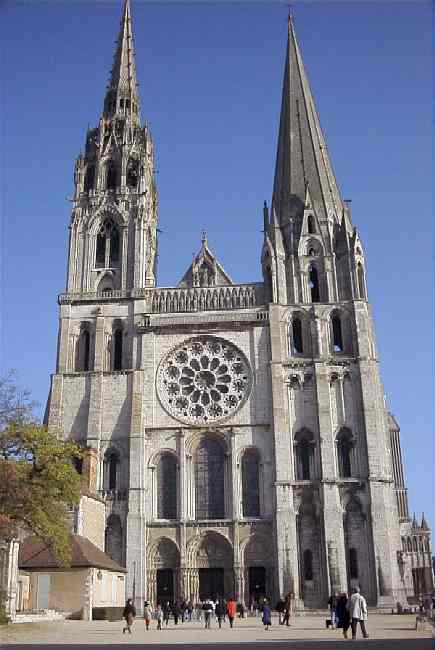 Chartres Cathedral -- West front
Chartres Cathedral -- West front
On Halloween day, we ventured to the train station and on to Chartres. If you think it's ironic that we visited one of the great Christian shrines on our best-known pagan holiday, think again. The Chartres Cathedral was built on the site of a pagan temple dedicated to a young lady who gave birth. The spot had been sacred long before. In fact, in front of the city, we couldn't help notice a pack of exuberant, devil-costumed kids raucously climbing the narrow streets. The Druids would have been proud! Records show a Marian cult here from the 4th century, long preceeding the present cathedral. In the 9th century, Charles the Bald gave a significant relic to Chartres which further solidified its position as a major destination for pilgrims.
We took advantage of the change to central time to get an early start and got to Chartres in time for the 11AM mass (which also gave us full sun on the West front, making outdoor picture taking pretty easy). Upon leaving the Chartres train station and walking a couple blocks into town, we were confronted by the view at the top of the page. Unlike Notre Dame in Paris which barely peaks above the surrounding buildings, Notre Dame in Chartres clearly dominates the city -- as you approach by train or car and while you walk the hilly streets below.
Unlike most Gothic Cathedrals, Chartres was rebuilt in a short time frame, about 25 years, giving it remarkable architectural consistency. The exception is the west front which remained after the fire of 1194. The West fašade is obviously the focal point in Cathedrals. Here's an outside view of Chartres west rose window:

Rose windows grew out of the Roman oculus -- the large round opening the Romans used to bring in the sun into their domes such as my favorite old Roman building, the Pantheon. However, the Rose Windows don't let in all that much light and so I had a lot of trouble getting pictures inside. The photo below shows the morning sun streaming into the Cathedral. (That's Pietrina in red in the lower right corner):
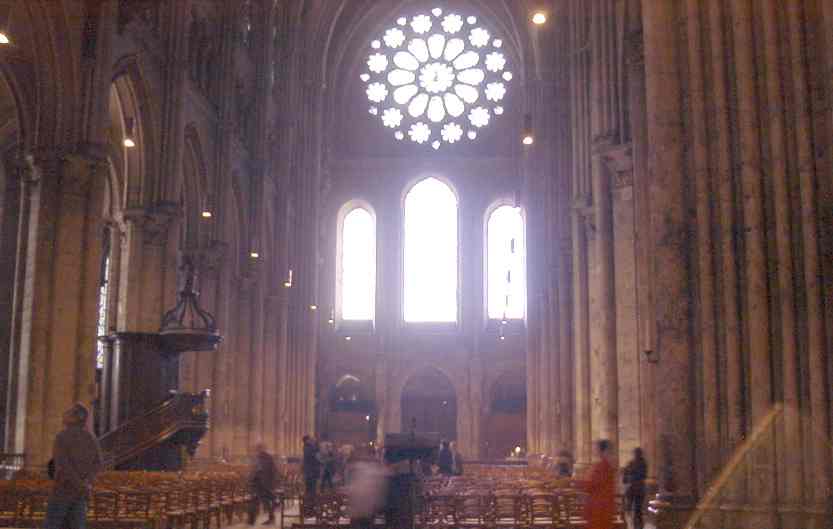
OK, this rose window doesn't let in as much light as the Roman oculus, even though it is one of the most advanced as seen that it spans almost the entire nave. (Need a dictionary of Gothic terms? click here) In fact, the interior of the Cathedral is pretty dark which contributes to the overall feeling. We can't quite blame the builders since the stain glass over 700 years or so has darkened and much more light enters than was originally intended.
The overall west side is Romanesque, built about 50 years before the fire destroyed the rest of the previous church.
On the west fašade over the rose window appear this group of carvings added in the 14th century called the Gallery of Kings. These represent the Kings of Judah, Mary's ancestors. Above them in the shadow, Mary presents her infant son to the town:

Below the rose window we have the famous Royal Portal (12th century) where most tourists enter the Cathedral:
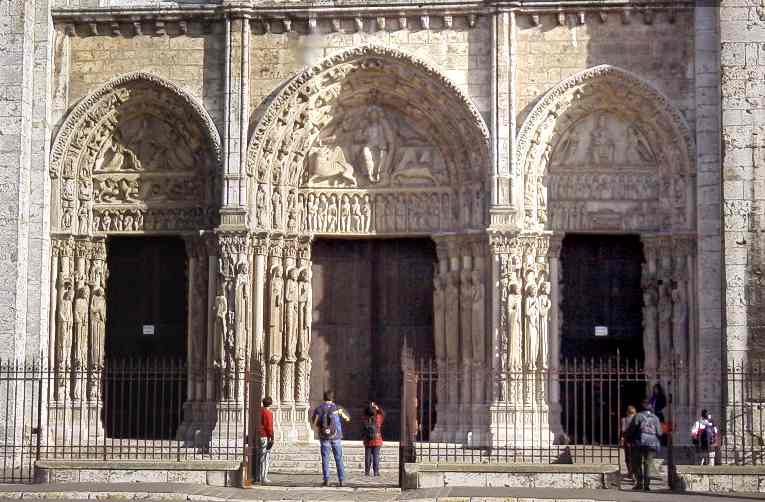
These three doorways sculpturally show three phases of Christ's life. The Middle shows the second coming while the right door shows the first coming (Annunciation, etc.). The left shows his ascension back into heaven.
Now let's look closer at the Christ figure above the center door:
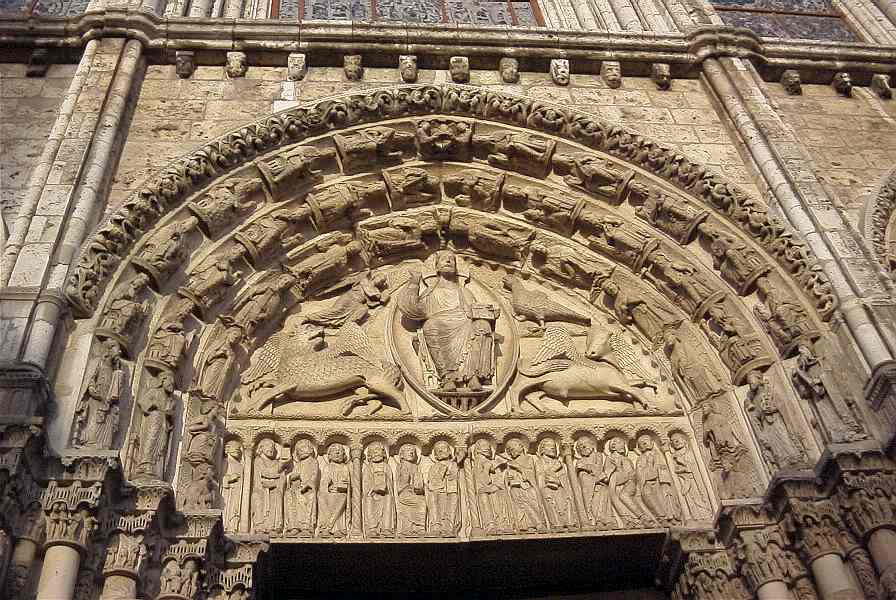
This spot is typical of the doorways: richly decorated and teeming with Christian symbols. For instance, Christ is surrounded by animals symbolizing the evangelists; he sits above images of the 12 apostles sandwhiched between Elijah and Enoch. (We have a better carving than thematic consistency in some of these figures.).
On either side of the door, the supporting pillars are carved with jamb figures, elongated to fulfill their function as pillars:
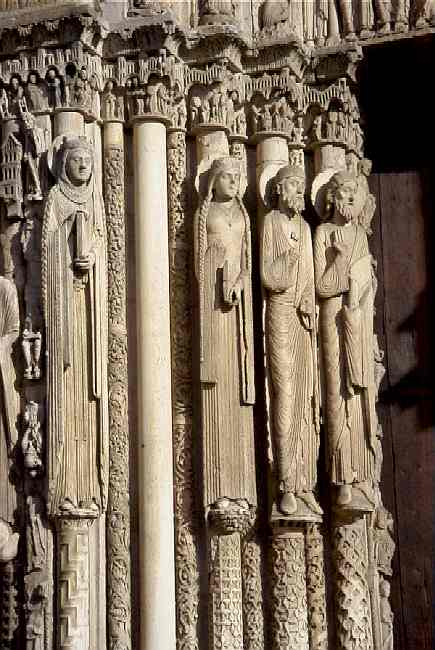 |
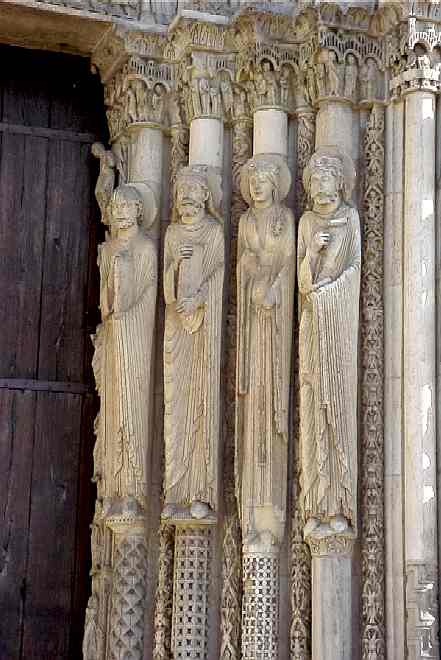 |
On either side of the west fašade, are the towers: Here's a couple pictures of the North tower (called the "new" bell tower," is, in fact, older than the old tower, at least it lower portion. The top half was originally wooden and replaced after it burnt down in 1506.)
|
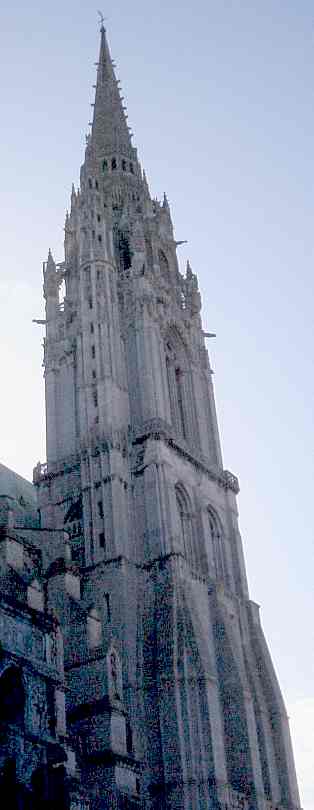 |
And here's the "old" tower, completed without interruption in 1145, seen from the streets of the city. Note how the tower is square on the bottom but octagonal at the top. This is the tallest Romanesque stone spire to be built without timberwork.
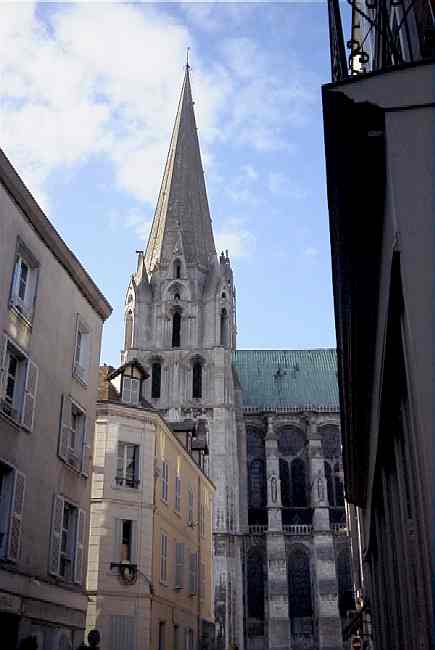
Next we'll explore the South side. Please join us by clicking here:
Where do you want to go today? Here's a few choices:
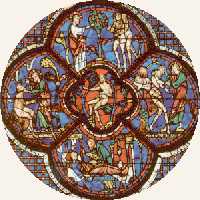
Pietrina and Dick's Home Page |